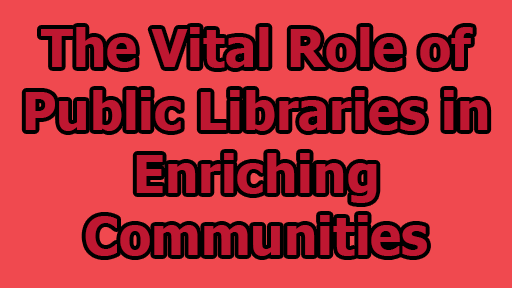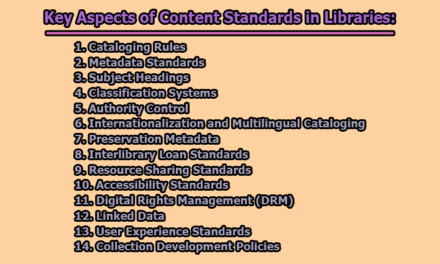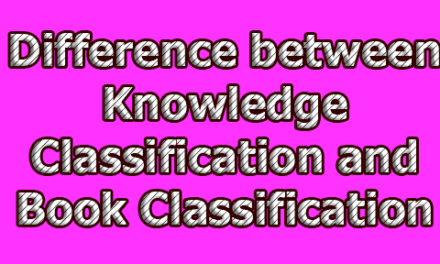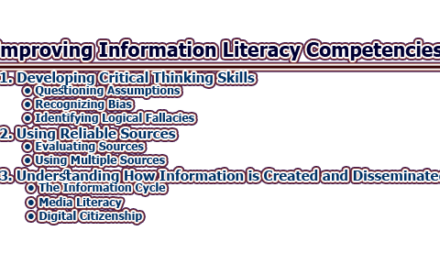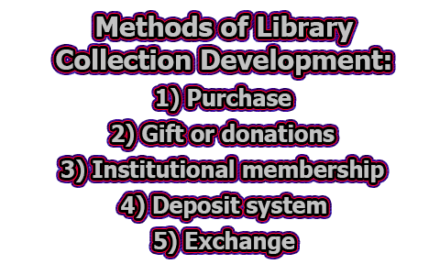The Vital Role of Public Libraries in Enriching Communities:
Public libraries have long been cherished institutions that play a vital role in enriching the lives of individuals and communities alike. From their ancient origins to modern-day advancements, public libraries have evolved into dynamic centers of learning, community engagement, and cultural preservation. This article explores the significance of public libraries, their objectives, functions, and the essential book selection policies that guide their collections. By providing free access to a vast array of resources, promoting literacy, and fostering community interaction, public libraries continue to be indispensable pillars of knowledge and empowerment in society. The vital role of public libraries in enriching communities.
History and Evolution of Public Libraries:
The roots of public libraries can be traced back to antiquity, with the great libraries of Alexandria and Pergamum serving as early examples. These ancient institutions housed extensive collections of books and scrolls, serving as hubs for learning and intellectual exchange. The first modern public library in the United States was established in 1833 in Peterborough, New Hampshire, marking the beginning of a widespread movement that transformed libraries into integral community assets.
Benefits of Public Libraries:
a) Promotion of Literacy and Education: Public libraries remain essential in promoting literacy and education. Through their diverse collections of books, periodicals, and printed materials, libraries provide individuals with access to information that can enhance their knowledge and understanding of the world. Many libraries also offer educational programs and resources that help people of all ages improve their reading, writing, and critical thinking skills, further fostering a love for learning.
b) Digital Access and Literacy: In the digital age, public libraries have adapted to offer access to a wealth of digital materials, including e-books, audiobooks, and online databases. These resources allow patrons to stay connected, explore new horizons, and develop digital literacy skills. With free Wi-Fi and computer workstations, libraries have become vital community hubs for digital learning and access to technology.
c) Community Engagement and Social Interaction: Libraries serve as welcoming community spaces that encourage social interaction and engagement. They host various programs, events, and activities, such as book clubs, author talks, and film screenings, fostering connections among people with shared interests. Public libraries become gathering places where diverse individuals can come together to exchange ideas and build a sense of community.
d) Support for Underserved Communities: Public libraries play a crucial role in providing essential resources and services to underserved communities. These may include job search resources, legal assistance, and a safe space for those experiencing homelessness or mental health challenges. By catering to the needs of diverse populations, libraries strive to create inclusive and accessible environments for all.
e) Preservation of Cultural Heritage: Through their special collections of rare books, manuscripts, and historical materials, public libraries actively contribute to preserving and promoting cultural heritage. By making these resources accessible to the public, libraries help foster a deeper understanding and appreciation of a community’s shared history and traditions.
Objectives of Public Libraries:
Public libraries play a crucial role in the socio-economic development of communities by serving various objectives that cater to the diverse needs and interests of their patrons. These objectives are carefully designed to create an inclusive, informed, and vibrant community that fosters personal growth, lifelong learning, and cultural enrichment. Let’s explore each of these objectives:
1. Providing Free Access to Information and Knowledge: One of the primary goals of public libraries is to offer free access to a vast repository of information and knowledge. By providing a diverse collection of books, magazines, newspapers, and digital resources, libraries ensure that community members have access to the latest and most relevant information across various subjects. This objective is particularly crucial for individuals who may not have the means to afford books or access to the internet, democratizing knowledge and promoting intellectual growth.
2. Supporting Education and Research: Public libraries serve as invaluable resources for students, researchers, and scholars. They provide access to academic journals, databases, and other research materials that support formal education and encourage independent learning. By offering a wide range of educational resources, libraries become partners in the pursuit of academic excellence, contributing to the intellectual development of individuals and the community at large.
3. Encouraging Community Engagement: Public libraries are much more than just book repositories; they are vibrant community spaces that encourage social interaction and engagement. Libraries organize various events, programs, and workshops that bring people together, fostering a sense of belonging and community spirit. From book clubs to author talks and art exhibitions, these community-centered initiatives promote dialogue, exchange of ideas, and a shared appreciation for culture and knowledge.
4. Fostering Digital Literacy: In an increasingly digitized world, public libraries recognize the importance of digital literacy. Many libraries offer free computer access, Wi-Fi, and technology training programs to empower individuals with essential digital skills. By bridging the digital divide, libraries ensure that everyone, regardless of age or background, has the tools and knowledge to participate fully in the modern digital society.
5. Promoting Literacy and Lifelong Learning: Public libraries are champions of literacy, especially for children and young adults. They offer engaging programs like storytimes, reading challenges, and educational workshops that instill a love for reading and learning from an early age. Moreover, libraries cater to lifelong learners by providing opportunities for personal and professional development through workshops, seminars, and self-paced learning resources.
6. Preserving and Promoting Cultural Heritage: Libraries take on the role of cultural custodians by preserving and promoting a community’s cultural heritage. Special collections of historical documents, manuscripts, local histories, and other materials are curated to ensure the rich cultural identity of the community is passed down through generations. These collections provide insights into the past, foster a sense of pride, and encourage a deeper understanding of one’s roots.
7. Supporting Economic Development: Public libraries actively support economic development by offering resources and services that benefit entrepreneurs, small business owners, and job seekers. Access to business databases, market research, and career development resources aid in economic growth and job creation within the community. Libraries also serve as spaces for networking and idea sharing among aspiring entrepreneurs.
8. Enhancing the Quality of Life: Ultimately, the overarching objective of public libraries is to enhance the quality of life for community members. By providing access to a wide range of resources, opportunities for personal growth, and spaces for social interaction, libraries contribute to a more enriched and fulfilled community. Libraries become places of empowerment, enlightenment, and entertainment, making the community a better place to live, work, and learn.
Functions of Public Libraries:
Public libraries are dynamic institutions that serve as vital community hubs, offering a wide range of functions that cater to the diverse needs and interests of their patrons. These functions go beyond traditional book lending, making libraries indispensable pillars of knowledge, empowerment, and social cohesion. Let’s delve into each of these primary functions:
i. Providing Access to Information: One of the core functions of public libraries is to provide free and equitable access to a wealth of information. Libraries house extensive collections of books, magazines, newspapers, and digital resources, allowing individuals to explore various subjects, perspectives, and ideas. By serving as repositories of knowledge, libraries play a fundamental role in promoting intellectual growth and empowering individuals to make informed decisions.
ii. Supporting Lifelong Learning: Public libraries are committed to promoting lifelong learning. They offer a myriad of educational resources and programs for individuals of all ages, including workshops, seminars, lectures, and online learning opportunities. By encouraging a culture of continuous learning, libraries contribute to personal development and professional growth, helping individuals thrive in a rapidly changing world.
iii. Fostering Community Engagement: Libraries are more than just repositories of books; they are vibrant community spaces that foster social interaction and engagement. Various events, such as book clubs, author talks, art exhibitions, and cultural programs, bring community members together, promoting dialogue and exchange of ideas. These community-centered initiatives create a sense of belonging and strengthen the social fabric of the community.
iv. Promoting Literacy: Public libraries play a pivotal role in promoting literacy, particularly among children and young adults. Early literacy programs, storytimes, and reading challenges cultivate a love for reading from a young age, laying the foundation for lifelong learning and personal growth. Libraries also provide resources and support for individuals learning to read or seeking to improve their literacy skills.
v. Preserving Cultural Heritage: Public libraries act as guardians of cultural heritage by preserving and promoting a community’s historical and cultural materials. Special collections of local history, rare manuscripts, oral histories, and artifacts offer valuable insights into the community’s past and cultural identity. By making these resources accessible, libraries contribute to a deeper understanding and appreciation of one’s heritage.
vi. Providing Access to Technology: In the digital age, public libraries play a crucial role in bridging the digital divide by providing access to technology. Free computer access, internet connectivity, and technology training programs empower individuals with essential digital skills. Libraries ensure that everyone has the opportunity to participate fully in the digital society, regardless of their socio-economic background.
vii. Serving as a Safe Space: Public libraries serve as safe and welcoming spaces for individuals of all backgrounds and walks of life. They provide a refuge for those seeking a quiet place to study, work, or read. Libraries also offer a supportive environment for marginalized or vulnerable populations, such as the homeless, providing access to resources and services that they might not find elsewhere.
Book Selection Policies of Public Libraries:
Book selection policies are essential frameworks that public libraries establish to guide their choices in acquiring materials for their collections. These policies ensure that libraries maintain a balanced, relevant, and diverse collection that aligns with the needs and interests of their communities. Let’s delve into each key element of book selection policies:
A. Clearly Defined Objectives: At the heart of every book selection policy lies a set of clearly defined objectives that outline the library’s mission and purpose. These objectives reflect the library’s commitment to serving its community, promoting literacy, fostering lifelong learning, preserving cultural heritage, and supporting various educational and informational needs. The objectives provide a roadmap for the selection process, ensuring that all materials align with the library’s core mission.
B. Criteria for Selection: The criteria for selection are the essential guidelines that librarians use to assess potential materials for inclusion in the collection. These criteria may encompass factors such as:
- Relevance: Materials should be relevant to the community’s interests, educational needs, and cultural diversity.
- Authority: The credibility and expertise of the author or creator are considered when evaluating the quality and accuracy of the material.
- Currency: Materials should be up-to-date and reflect the latest information and trends, particularly in rapidly changing fields.
- Quality: The overall literary or artistic merit of books is evaluated to ensure the collection maintains high standards.
- Popularity and Demand: Librarians consider the popularity and anticipated demand for specific materials among the library’s users.
- Reviews and Recommendations: Professional reviews and recommendations from reputable sources aid in the selection process.
C. Responsibility for Selection: Book selection policies outline the responsibility for selecting materials, usually assigned to qualified librarians or library staff. These individuals possess the expertise and knowledge necessary to curate a well-rounded and relevant collection. Additionally, some libraries involve community members through advisory committees to ensure that the collection reflects the interests and preferences of the local population.
D. Types of Materials Included: Book selection policies encompass the types of materials that the library aims to include in its collection. Beyond traditional printed books, libraries now incorporate a variety of formats, such as e-books, audiobooks, DVDs, music CDs, and other digital resources. This diversity caters to the different learning styles and preferences of patrons.
E. Weeding and De-selection Practices: Weeding and de-selection involve the periodic review and removal of outdated, damaged, or low-use materials from the collection. By regularly weeding the collection, libraries ensure that the resources offered remain current, accurate, and relevant. Weeding frees up space for new materials and maintains a fresh, dynamic collection.
F. Intellectual freedom and censorship: The policy should address the library’s commitment to intellectual freedom and its stance on censorship. This may include a statement supporting the freedom to read and access to a wide range of ideas and viewpoints.
G. Allocation of Collection Development Budget: Book selection policies address the allocation of the library’s collection development budget. This ensures that financial resources are appropriately distributed to cover various subject areas, formats, and the constant renewal of the collection.
From the above discussion, we can say that public libraries remain indispensable cornerstones of communities, providing free access to information, promoting literacy, encouraging community engagement, and preserving cultural heritage. Through their diverse functions and well-crafted book selection policies, libraries continuously strive to enrich the lives of individuals and support the growth and prosperity of the societies they serve. As we move forward, it is crucial to recognize the significance of public libraries and invest in their sustainability to ensure their continued positive impact on future generations.
Frequently Asked Questions [FAQs]:
What is the purpose of a public library?
The purpose of a public library is to provide free access to a wide range of resources and information, promote literacy, support education and research, foster community engagement, preserve cultural heritage, offer access to technology, and create a safe space for individuals of all backgrounds.
What materials are available at a public library?
Public libraries offer a diverse collection of materials, including books, magazines, newspapers, e-books, audiobooks, DVDs, CDs, and digital resources such as online databases and educational platforms.
How can public libraries promote literacy?
Public libraries promote literacy through various initiatives, including early literacy programs, reading challenges, book clubs, and workshops that encourage reading and lifelong learning.
How do public libraries support education and research?
Public libraries offer access to academic resources such as journals, databases, and research materials, providing essential support for students, researchers, and scholars.
What types of community engagement programs are available at public libraries?
Public libraries host a wide range of community engagement programs, such as book clubs, author talks, art exhibitions, cultural events, workshops, and seminars, where community members can come together and share ideas.
How do public libraries preserve cultural heritage?
Public libraries preserve cultural heritage through special collections of historical documents, local histories, rare books, manuscripts, and artifacts that offer insights into the community’s cultural identity.
Do public libraries offer technology services?
Yes, public libraries provide access to technology resources such as computers, internet access, and technology training programs to promote digital literacy and bridge the digital divide.
Are public libraries safe places for everyone?
Yes, public libraries strive to create safe and welcoming spaces for individuals of all backgrounds and circumstances, offering a supportive environment for learning, working, and socializing.
How are materials selected for the library’s collection?
Materials for the library’s collection are selected based on clearly defined objectives, criteria such as relevance, authority, and quality, and the expertise of qualified librarians or library staff.
How often are materials reviewed and removed from the library’s collection?
Materials are regularly reviewed and removed from the library’s collection through a process known as weeding and de-selection. This ensures the collection remains current, accurate, and relevant.
References:
- ALA (n.d.)., About ALA. Retrieved March 3, 2023, from https://www.ala.org/aboutala/before-1876
- Audunson, R. (2005). The public library as a meeting‐place in a multicultural and digital context: The necessity of low‐intensive meeting‐places. Journal of Documentation, 61(3), 429–441. https://doi.org/10.1108/00220410510598562
- Choi, N., & Joo, S. (2018). Understanding public libraries’ challenges, motivators, and perceptions toward the use of social media for marketing. Library Hi Tech, 39(2), 352–367. https://doi.org/10.1108/LHT-11-2017-0237
- Hvenegaard Rasmussen, C. (2016). The participatory public library: The Nordic experience. New Library World, 117(9/10), 546–556. https://doi.org/10.1108/NLW-04-2016-0031
- Skot‐Hansen, D., Hvenegaard Rasmussen, C., & Jochumsen, H. (2013). The role of public libraries in culture‐led urban regeneration. New Library World, 114(1/2), 7–19. https://doi.org/10.1108/03074801311291929

Library Lecturer at Nurul Amin Degree College

